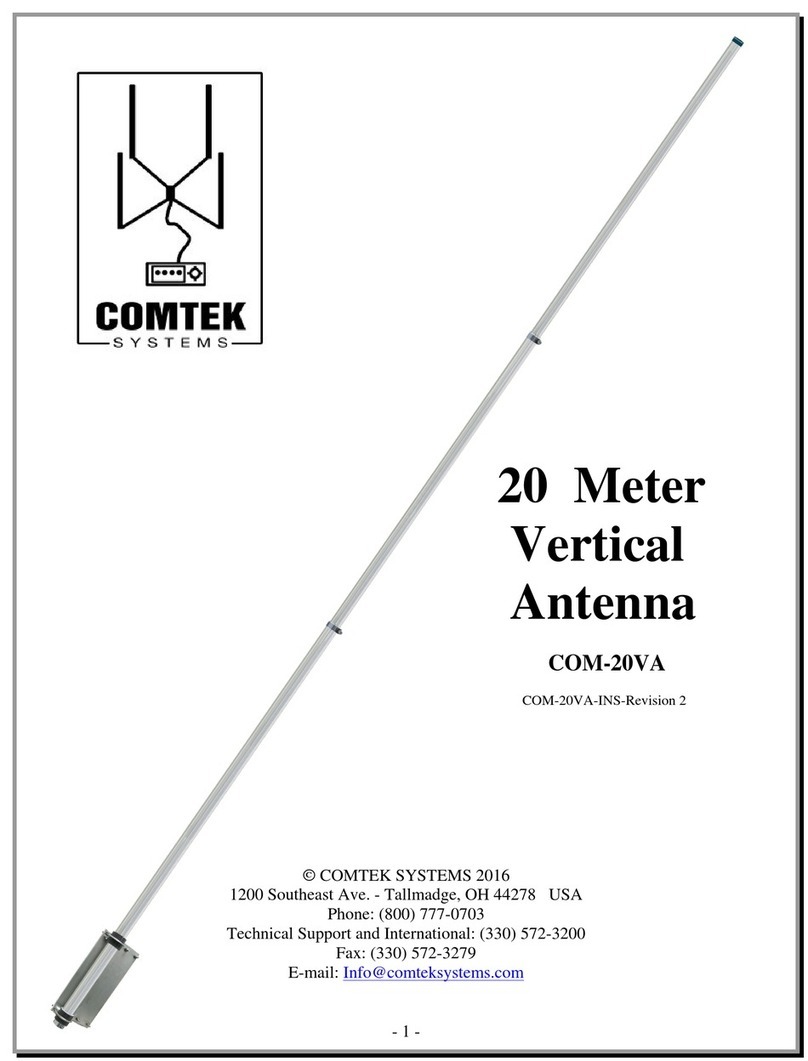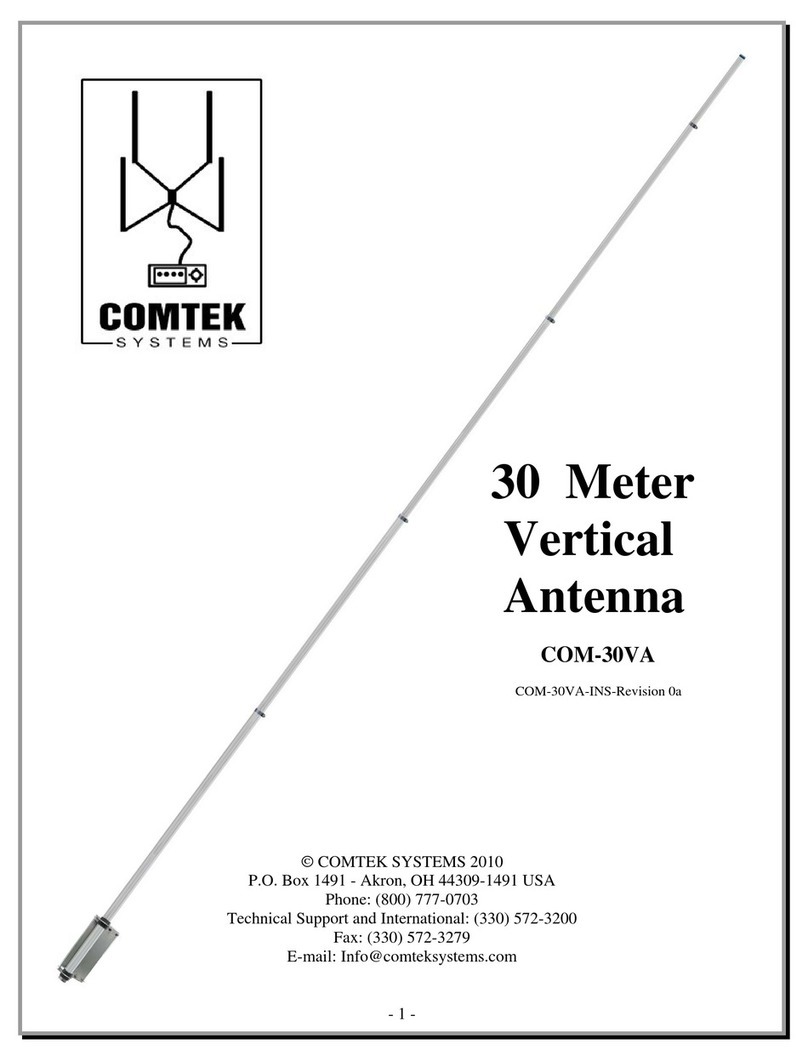
- 8 -
Manual Updates
Every effort is made to supply the latest manual revision with each product. Occasionally a manual
will be updated between the time your Comtek product is shipped and when you receive it. Please
check the DX Engineering web site - Comtek product line - at (www.comteksystems.com) for the
latest revision manual.
Technical Support
If you have questions about this product, or if you experience difficulties during the installation,
contact Comtek Systems at (330) 572-3200. You can also e-mail us at:
For best service, please take a few minutes to review this manual before you call.
Warranty
All products manufactured by Comtek Systems are warranted to be free from defects in material and workmanship for a
period of one (1) year from date of shipment. Comtek Systems’ sole obligation under these warranties shall be to issue
credit, repair or replace any item or part thereof which is proved to be other than as warranted; no allowance shall be
made for any labor charges of Buyer for replacement of parts, adjustment or repairs, or any other work, unless such
charges are authorized in advance by Comtek Systems. If Comtek Systems’ products are claimed to be defective in
material or workmanship, Comtek Systems shall, upon prompt notice thereof, issue shipping instructions for return to
Comtek Systems (transportation-charges prepaid by Buyer). Every such claim for breach of these warranties shall be
deemed to be waived by Buyer unless made in writing. The above warranties shall not extend to any products or parts
thereof which have been subjected to any misuse or neglect, damaged by accident, rendered defective by reason of
improper installation, damaged from severe weather including floods, or abnormal environmental conditions such as
prolonged exposure to corrosives or power surges, or by the performance of repairs or alterations outside of our plant,
and shall not apply to any goods or parts thereof furnished by Buyer or acquired from others at Buyer’s specifications.
In addition, Comtek Systems’ warranties do not extend to other equipment and parts manufactured by others except to
the extent of the original manufacturer’s warranty to Comtek Systems. The obligations under the foregoing warranties
are limited to the precise terms thereof. These warranties provide exclusive remedies, expressly in lieu of all other
remedies including claims for special or consequential damages. SELLER NEITHER MAKES NOR ASSUMES ANY
OTHER WARRANTY WHATSOEVER, WHETHER EXPRESS, STATUTORY, OR IMPLIED, INCLUDING
WARRANTIES OF MERCHANTABILITY AND FITNESS, AND NO PERSON IS AUTHORIZED TO ASSUME
FOR COMTEK SYSTEMS ANY OBLIGATION OR LIABILITY NOT STRICTLY IN ACCORDANCE WITH THE
FOREGOING.
©Comtek Systems 2010
Comtek Systems®, DX Engineering®, DXE®, Hot Rodz™, Maxi-Core™, THUNDERBOLT™, Antenna Designer™,
Yagi Mechanical™, and Gorilla Grip™ Stainless Steel Boom Clamps, are trademarks of PDS Electronics, Inc. No
license to use or reproduce any of these trademarks or other trademarks is given or implied. All other brands and
product names are the trademarks of their respective owners.
Specifications subject to change without notice.



























